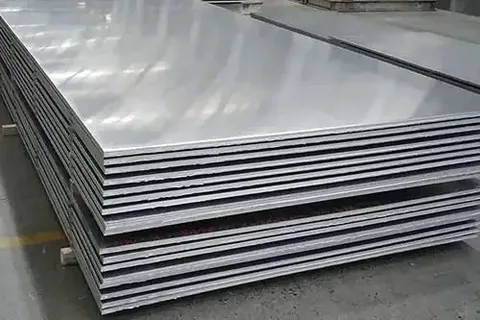Aluminium plates are among the most versatile materials used across industries such as aerospace, construction, automotive, and marine engineering. Their popularity stems from aluminium’s lightweight nature, excellent strength-to-weight ratio, corrosion resistance, and workability. However, not all aluminium plates are created equal. Different grades and types serve different purposes, depending on the application. In this comprehensive guide to aluminium plate grades and types, we’ll break down the most common options and their uses.
Understanding Aluminium Plate Grades
Aluminium plate grades are categorized based on the alloying elements used, which significantly affect their mechanical properties and corrosion resistance. Here are some of the most common grades:
1. 1000 Series – Commercially Pure Aluminium
The 1000 series, particularly 1050, 1060, and 1100 grades, contains 99% or more aluminium. These are highly corrosion-resistant and offer excellent thermal and electrical conductivity. However, they are relatively soft and not suited for high-strength applications.
2. 2000 Series – Aluminium-Copper Alloys
Known for high strength and excellent machinability, the 2000 series (especially 2024) is widely used in aerospace components. However, these grades are less corrosion-resistant and often require protective coatings.
3. 5000 Series – Aluminium-Magnesium Alloys
Grades like 5052 and 5083 fall under this category. They are known for outstanding corrosion resistance, especially in marine environments. These plates are ideal for shipbuilding, pressure vessels, and transportation equipment.
4. 6000 Series – Aluminium-Magnesium-Silicon Alloys
This group includes grades like 6061 and 6082, known for their good mechanical properties, weldability, and corrosion resistance. 6061 aluminium plate, in particular, is popular in structural applications.
5. 7000 Series – Aluminium-Zinc Alloys
These are among the strongest aluminium alloys available, with 7075 being the most notable grade. Used heavily in aerospace and sporting equipment, these grades offer exceptional strength but lower corrosion resistance.
Common Types of Aluminium Plates
Aside from grade differences, aluminium plates are also categorized by their form, surface texture, and production method.
1. Flat Rolled Aluminium Plates
These are the most common types, manufactured through a rolling process to achieve specific thicknesses. Flat rolled plates are used in everything from structural applications to appliance panels.
2. Tread Plates
Also known as checker plates or diamond plates, these aluminium sheets feature a raised pattern for grip. They’re often used for flooring, stairs, and walkways, especially in industrial or transportation settings.
3. Cast Aluminium Plates
Produced through casting rather than rolling, these plates offer excellent dimensional stability and are used in precision machining applications.
4. Composite Aluminium Panels
These are multi-layered panels combining aluminium with other materials (like polyethylene) to enhance strength, durability, or fire resistance. They’re widely used in architectural cladding.
Choosing the Right Grade and Type for Your Application
When selecting an aluminium plate, consider the following factors:
- Strength Requirements: For structural or load-bearing components, higher-strength alloys like 2024 or 7075 are ideal.
- Corrosion Resistance: Marine and outdoor applications benefit from 5000 or 6000 series alloys.
- Formability and Weldability: If you need to bend or weld the plate, grades like 5052 or 6061 offer better workability.
- Surface Finish Needs: For aesthetic or functional surfaces, consider tread plates or anodized options.
In a comprehensive guide to aluminium plate grades and types, matching the right grade and type to the application is crucial for performance, longevity, and cost-efficiency.
Conclusion
Understanding aluminium plate grades and types is essential for making informed decisions in engineering and manufacturing. Each grade offers unique benefits in terms of strength, corrosion resistance, and machinability. Similarly, the type of plate—whether flat rolled, cast, or tread—can impact usability and performance. As outlined in this comprehensive guide to aluminium plate grades and types, choosing the right combination ensures success in any project, from lightweight structures to high-performance machinery.


